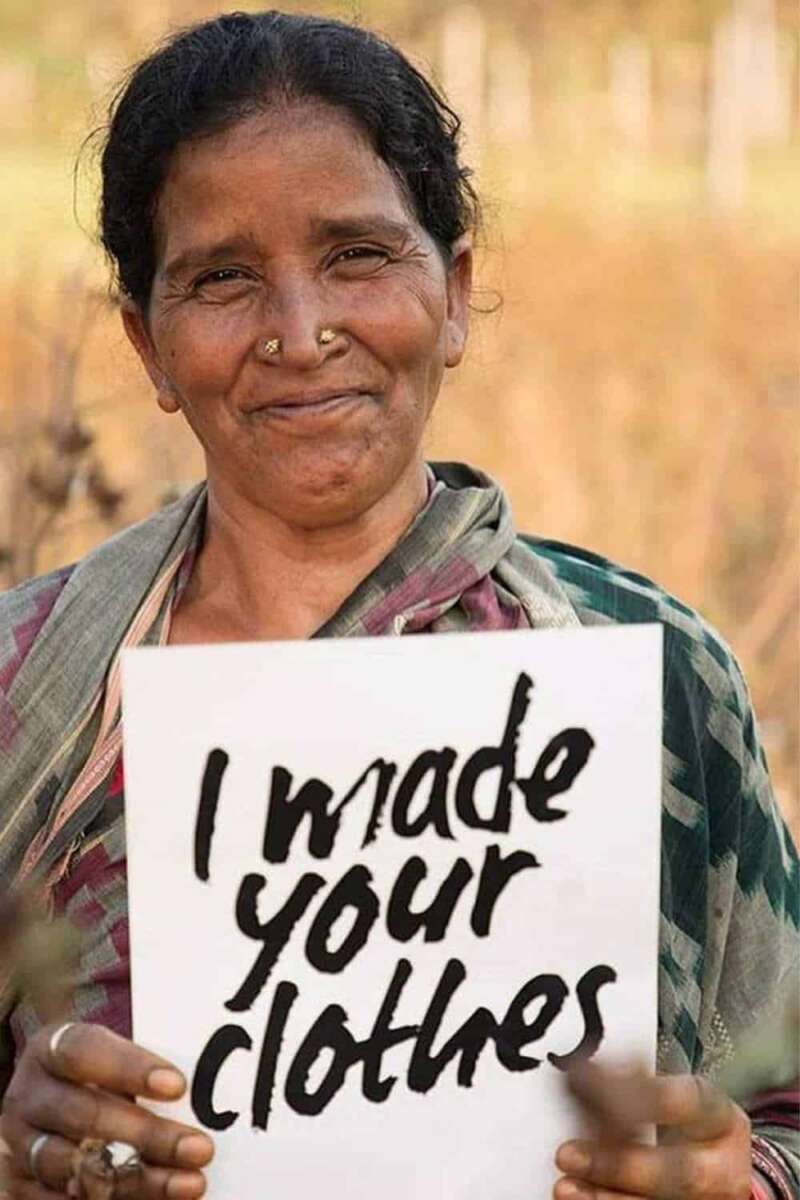Going Behind The Scenes With The People Who Make Your Clothes

Share This Article
“Who makes your clothes?” Ten years ago, this wasn’t a popular question. But, after the collapse of Rana Plaza killed 1,000+ Bangladeshi garment workers in 2013, the fashion industry was forced to reconcile with and support the artisans, families, and workers making our beloved dresses and cotton t-shirts. Customers like you and I were no longer satisfied with blank claims that brands “didn’t know about the slave labor” practices that went into making their clothes. NGOs and human rights organizations demanded that factories be assessed and vetted for safe conditions and fair wages and that harmful dyes and chemicals be banned.
Made in China doesn’t cut it anymore. Made in Fairtrade factories, collaborating with NGOs and showing who made their clothes is the new way for brands to show that their items are ethically-made.
After Rana’s plaza collapse highlighted the unsavory side of the fashion industry, Fashion Revolution began a movement demanding transparency across the supply chain. It took the industry by storm with the hashtag #whomademyclothes and its various variants. The aim was to hold brands responsible and educate customers about the issues impacting the people making their clothes. Customers wrote brands who were forced to reckon with their choices or proudly showcase the artisans, embroiders, and garment workers that they partner with. And, there are several ways that brands are communicating this.
Millions are encouraged to contact fashion brands… to ask the simple question #WHOMADEMYCLOTHES
Artisan Made
Counted cross stitches. French seams. Loom beading. Making beautiful clothes is an art form steeped in culture and historical traditions. Turn over the label of a dress with an embroidered trim or delicate beadwork at the collar. Where does it say that it’s made? Guatemala? India? Kenya? Even if the clothing item wasn’t made there, a designer could have purchased fabric embroidered or finished by artisans from one of these regions, where generations have passed down these skills to keep these traditions alive. When Westerners visit these areas we are still dazzled by the beauty of these clothing.
Like anyone who has perfected a skill, it’s important that these workers are paid fairly for their time, knowledge, and hard work. Yet, in the age of capitalism, finding the ‘cheapest & best’ deal leaves workers vulnerable to meeting work demands wages far below what is considered liveable in their countries. This is ‘working poverty’, where despite being employed full-time, the wages are so low that people remain in poverty. More often than not it is women and children who are exploited in these situations who take on these jobs to help support their families.
Click to read more…
Companies like Ethical Fashion Guatemala work directly with artisans to ensure that they are being paid fairly instead of being exploited. Brands need to be adamant about building a relationship with the artisans and workers throughout their supply chain. It’s important for customers to demand transparency for these brands accountable for how their clothes are made.
Female Empowerment
Fashion’s most vulnerable workers are women. They represent 80% of the world’s garment workers. Unfortunately, there are countless reporters from garment factories in Los Angeles to Jaipur about being harassed, exploited, and discriminated against by their male superiors. International Labor Rights and even women-run garment factories have begun to give women back their dignity and voice by listening to them, educating them about their rights, and creating female-run factories where women feel safe. A job should never feel exploitative. It should be empowering.
Click to read more…

Fair Trade
“Fair Trade is a trading partnership, based on dialogue, transparency, and respect, that seeks greater equity in international trade,” World Fair Trade
The idea that fair work deserves fair wages sounds simple and almost like a given. Employers should pay their employees fairly. Yet, from Los Angeles to Jaipur, the opposite happens. Employees are being exploited, receiving wages far below the liveable standard, and working conditions are unregulated to the point that sickness and ill health comes with the job. Yet, third-party organizations, like Fair Trade Certified, are partnering with brands and factories to change that by improving the conditions of workers and guiding brands on creating ethical businesses. These certifications ensure an agreement is in place – clothing is made through an equitable relationship. Fairtrade promotes accountability and workers’ voices being heard.
Family Owned
“We work with a small, family-run manufacturer in Bali that has been operating for more than 40 years and employs highly skilled artisans,” Poème Clothing
There’s a difference between factories that operate on cutting corners to maximize profit and those that focus on consistently offering high-quality products. This can also translate to how they treat their employees too- with respect, living wages, and benefits. Sometimes, family-owned factories adhere to these values out of pride, tradition, and competition with larger factories.
Click to read more…
Brands should give recognition to the people who make their clothes. And, we as customers have a responsibility to ask. Whether the answer to “who makes your clothes” is artisans, family-owned, or fair trade, transparency is important. Because, what incidences like Rana Plaza’s collapse have taught us, is that a lack of transparency makes it easier for brands to avoid responsibility. But, when they’re forced to share the stories of the people behind our clothing, we all have a chance to not only dress nicely but also address the injustices happening around the world. That’s the power of asking “Who makes my clothes.”
